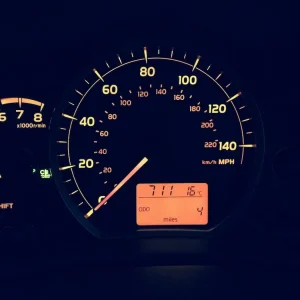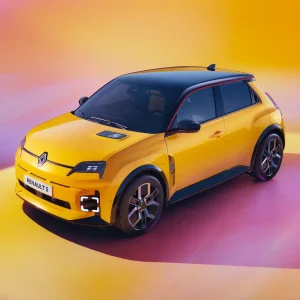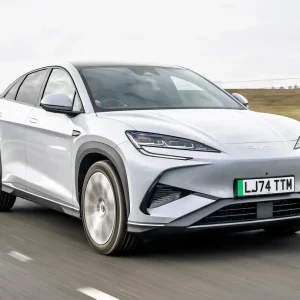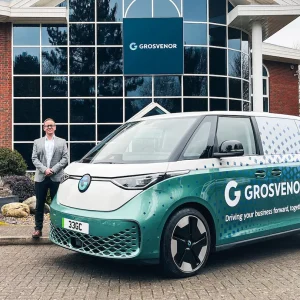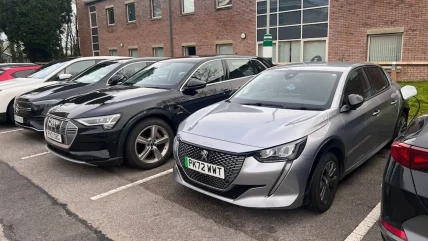
In an industry where progress often inches forward, the Eric Wright Group is breaking ground – not just in construction, but in the electrification of its fleet.
The company’s dedication to environmental stewardship and sustainability not only emphasises its commitment to advocating for positive environmental outcomes but also establishes a groundbreaking benchmark for the construction sector.
At the helm of the fleet is Steve Openshaw, a seasoned professional with a career tracing back to the 1980s. He initiated his journey as a mechanic handling construction equipment, steadily advancing through various management roles before joining the fleet at Eric Wright 17 years ago. Essentially, anything with an engine and wheels falls within his realm of expertise.
Openshaw is an enthusiastic early adopter of electric vehicles, having previously driven multiple EVs as his personal cars. Before his current Polestar 2, he was driving a BMW i3 range-extender, in which he covered 48,000 miles using only 30 litres of fuel. Openshaw humorously recalls being dubbed an “electronaut” by BMW.
His first-hand experience and passion for EVs served as a persuasive example for Eric Wright’s fleet of drivers, showcasing that a range of approximately 120 miles was manageable. This is notably lower than the majority of EVs available today, prompting the fleet to become early adopters too.
“We’re well on our way down the electrification route with our Eric Wright car fleet,” Openshaw says with a smile.
The fleet comprises 500 vehicles, with 150 designated as vans, while the remaining 290 consist of a blend of company cars and cash allowance vehicles. Since those early days, the EV range and selection has increased significantly, allowing for the fleet to continue its adoption of the alternative fuel. Now, of the 500 vehicles, only 17 diesels and 4 petrols remain, the rest of which are mild hybrid, plug-in hybrid or pure electric. In 2022, the Group made headlines by delivering its hundredth electric fleet vehicle.
“We can offer an electric car in every grade we have now,” notes Openshaw. “Initially, they were only offered to drivers of senior grade or premium vehicles, but now we are able to provide a decent electric car in the junior grade too, it’s great,” he adds.
When questioned about the challenges of transitioning to electric vehicles at an early stage, Openshaw attributed the dispelling of initial doubts to the impact of Benefit-In-Kind taxation. He states, “BIK eliminated range anxiety. Previously, concerns were raised about coping with limited mileage, but perceptions quickly changed when individuals recognised the tax benefits.”
According to Openshaw, the fleet drivers embraced electric vehicles positively. He acknowledges that certain challenges persist for some individuals, particularly those residing in locations where electric charging infrastructure may not be readily available, possibly due to rental living arrangements. To address such concerns, the fleet continues to provide powertrain alternatives, such as mild hybrids.
He explains that the challenge isn’t so much the batteries in electric vehicles anymore; it’s the charging network that remains a concern. “Although not as formidable as when I initially started on my electric journey, establishing a functional charging infrastructure in a challenging environment was the primary goal. The idea was to demonstrate that even in a landscape with limited charge points, it’s still feasible.”
Topping up the charge
Many of the company’s 500 fleet drivers are office-based for four hours per day or more, allowing for an investment in chargers on site through a partnership with BP Pulse that supports their commute and allows them to charge while they’re at work, further minimising range anxiety. “The vast majority of cars are just topping up and there are very few of them who would need eight hours of charge,” says Openshaw.
Together with the charging infrastructure provider, the group has installed a total of 20 chargers which are a mixture of 18 7kW and 22kW at its Preston head office. “These 20 charging points can easily top up 60 cars in one day and we have the capacity to double or even treble that in the next five to 10 years,” Openshaw comments.
Openshaw also notes that to support its drivers if needed, the public charging network has grown significantly since the early days of electrification compared to when he took on his Ampera.
Openshaw frequently commutes to the company’s Dumfries offices. He remarks, “It’s entirely feasible, especially when overnight stays are planned for safety reasons after covering such a long distance.” While the company currently provides a pay-and-reclaim system for electric vehicle charging, Openshaw mentions that they would explore alternative approaches if the fleet were to embark on more frequent, longer journeys.
As part of the commitment to electrification, Eric Wright fleet drivers have also undergone environmental driver training with the Energy Saving Trust, and the group is collecting and analysing data on transport and energy use from all areas of the business to find new ways of further reducing its carbon footprint.
While currently dedicated to electrification efforts, when asked about the potential inclusion of hydrogen in the fleet’s future, Openshaw expressed his view that hydrogen holds great promise for heavy vehicles – a category absent from Eric Wright’s vehicle line-up.
To meet the group’s overall decarbonisation targets, Openshaw says the fleet is a big part of leading the change as it’s responsible for contributing to overall carbon output. The fleet is 22 to 29g of CO2 less than the construction sector average and we are projected to reach 0g by 2030.
“I’m being told we’re well on the way to achieve overall group objectives, which reflects how we are constantly looking at ways to reduce cost from fuel usage, telematics and journey planning.”
Safety and sustainability go hand in hand
While the most talked about benefits of electric vehicles are their lower emissions and reduced running and tax costs, Eric Wright Group has discovered another: increased safety. The adoption of EVs has seen the company significantly reduce the rates of their drivers getting into incidents.
The main reason behind this change, says Openshaw, is regenerative braking, which assists the traditional brakes by slowing the car down, conserving energy.
Driving electric makes them focus on better driving and lends itself to giving more distance between people to get the max out of the regenerative power.
“Of course, people still run into our drivers, but the number of our fleet drivers running into other drivers has reduced,” he explains. “Our drivers are learning to leave a bigger gap in front of them as more gradual braking will conserve the battery.”
Openshaw explains there is also a calming influence from driving an EV because of how easy they are to drive. “The fact they’re concentrating on conserving the battery also often makes them better drivers,” he continues.
When someone in the fleet takes on an EV and the company does the vehicle handover, they’re walked through the changes they should make to their driving style, explains Openshaw, who is now qualified as a driving assessor. “I can go out with people and carry out driver assessments, sharing my industry knowledge and my driving experience too,” he says.
The company supplements Openshaw’s driver training efforts by hiring external driver trainers with every vehicle including vans and cars of all powertrains.
Openshaw explains that drivers on his fleet usually take to EVs quickly: “I’ve taken drivers out on the road and shown them how to drive them and when we switch they get the hang of it virtually straight away, they’re that simple to drive.”
The company has rolled out online driver risk assessments to all new starters. As well as identifying any areas for improvement, the process also sets the tone for what is expected from a driver while they are working for the group. “There is around an hour-long induction going through aspects of business driving such as speed limits, mobile phone usage, how to carry out vehicle and tyre checks, and what to do in the case of an accident,” Openshaw notes.
To counteract false liability claims, the company has implemented dash cams across its van fleet.
Openshaw explains, “There were quite a few incidents where if we had a dashcam, it wouldn’t have been deemed our fault, despite appearing that way because we’re driving white vans, so to speak.” However, using video evidence, the company has been able to defend many of its drivers who Openshaw says he had no reason to disbelieve.
The dash cams have simultaneously enabled the company to leverage insights from the vans to enhance the overall driving conduct of both its car and van fleet drivers. “We’ve been able to use the data we’ve captured to educate drivers on speeding, harsh braking, idling and fuel consumption, to name a few.”
Although telematics is only installed on the van fleet, “we very much take those learnings to the car fleet,” Openshaw says.
Openshaw believes standards in legislation will continue to pose a challenge for his fleet and other similar fleets, with all fleet managers facing the same challenges. “I’m on the Association of Fleet Professionals where we look into best practices for fleets,” he says. The Association regularly lobbies the government to support road operations, increase awareness of best practice and support fleet managers in running compliant, effective operations.
Ultimately, Openshaw says a successful fleet is down to who manages it. “It is vital in my opinion to have a fleet professional who oversees everything.” His experience and training means he has a full understanding of legislation coming down the pipeline and how to take care of the company and its drivers.
“If it’s a small fleet it’s not ideal, but it’s possible for it to be managed by HR or health and safety professionals,” he adds, “but bigger fleets like ours undoubtedly need a dedicated fleet manager. There are so many changes happening that the person running the fleet needs to know what’s coming and when. If you get it wrong, it’ll cost you a fortune.”

